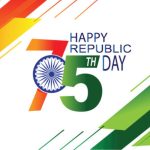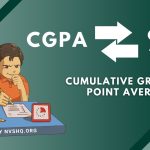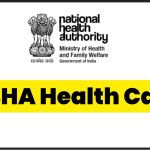How to Create Resume Online: A resume is the most essential document to get a job. It helps to organize qualifications and highlight achievements. It is what you will need to make a difference and stand out from all. Among the heap of resumes, things that make the resume stand out include the writing of the resume, which is somewhat of a task in itself. So, what are the things you need to put in a resume? What to write, what not to? Let’s find out in this article.
Here, in this article, we will make this monotonous task, a bit simple for you all. We will discuss some of the important points of building a resume. How to write a perfect resume. What exactly is the difference between a Resume and a CV? In addition to this, we have also provided a cover letter format below. Read to find out more.
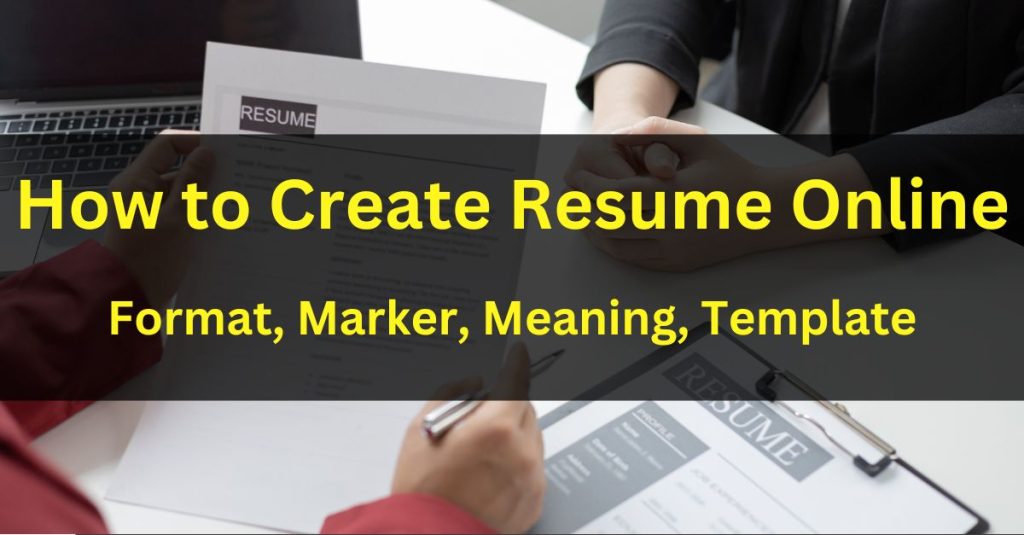
What is a Resume?
A resume is basically a concise representation document that helps in showcasing the skills, background, and achievements of an Individual. It can be defined as an essential document which summarises all the skills, background, and achievements of an Individual. It is basically a short and informative demonstration of all your achievements, experiences, and who you are in general.
This document can be utilized for procuring employment. People do find it difficult to what to include in their application to get that job. So, it is an essential part of deciding whether or not you will be hired. Therefore, the next question which pops up is what should a resume be like.
A resume should be comfortable to read yet informative enough to showcase all the skills you need to sell. Content is what matters the most. Writing a resume is all about evaluating the timeline of your life, achievements, and all the formal experiences you had. A perfect format will help you do that.
Resume Format
A Resume format is basically an organized display of all your details according to the industry you belong to. All your life achievements will go in vain if they are not put in a place where they need to be highlighted the most. An ideal resume format will help you detail all your values. It will assist you in showcasing all your achievements and skills in a way that proves to be an asset for the employer hiring you.
Outlining a perfect structure for your resume will help you do so. Formats for a Resume differ with the industry one belongs to like an IT professional’s resume will differ from the resume of a sales executive. Therefore, it is very important to know which format is peculiar for a particular job role. Resume formats are of three types: Chronological, Functional, and Hybrid.
| Chronological | Functional | Hybrid | |
| Format | Most Common | Not suggested | Modern Format |
| Experience order | recent work experience is displayed first, then the past ones displayed later | Focus is more on the skills, Education, and achievements instead of work experience | Skills and highlights are displayed at top, work experience is displayed later. |
| Used by | people who’s work history is related to the job he/ she wants. | People who want to change careers or with year gaps | Who wants a mix of achievements and work experience for the desirable job |
How to write a Resume?
As you now know the importance of your resume it is very essential to know how to write one to bag the next job you want. It is very essential to examine what sections you need to include in your resume and what information is suitable to be displayed. Here, we will discuss all the things you need to put in a resume to make it stand out from all. Your resume should contain all the parts described below in detail:
Heading
As soon as your application is opened the only section which will be displayed at the most is the heading. It is the foremost leading section of your resume displayed at the top. The header section includes all the essential information about an individual. As it is a professional description, make sure to not insert any fake information regarding the same.
The information illustrated on the header is the only means through which the employer will be able to communicate with you or contact you. The section of Heading should Include:
- First and the Last Name
- E-Mail Address
- Phone Number
- Professional social profile/ LinkedIn Profile (optional)
- Your Current Job Title (optional)
Introduction/ Objective
An Introduction is the essential component of any resume as it is only the perspective an employer is really concerned about. It is a short statement to introduce yourself and highlight your achievements in a few sentences.
A good introduction will provide a brief impression of the skills and applicable experience you’ve gained over the years. Make sure your introduction/ objective is convincing and your personal objective goes well with the goals of the company.

An introduction is perfect for people with experience. For others, you can go with writing an objective including your passion for the work you want to get hired for. You need to emphasize the objective of your resume but still not focus on it too much.
Work Experience
It is the main section after your introduction and an actual display of your work experience. Mostly a chronological pattern of writing is preferable for this section as the employer would be interested in what are you in touch with at the most. Display your recent position at the top and past experiences at the bottom. Some essential things to include in this section are:
- Dates of employment
- Name of the employer, location
- Job profile

If no Work Experience
If you have a very brief experience or an experience which is not formal or almost no experience. Try using a different outline for your resume. In such a case, list down the educational achievements. Write the skills and experiences relevant to the job or somewhat related to what you want. This will make you eligible with a brief amount of experience.
Education
It is an important section to be included even if you’re quite ahead beyond your experience. You need to know that the education section is important to be included even if you’re far progressing in your career timeline. Your list of Educational experiences should include:
- Degree with Major
- University
- Time period
- SGPA/ GPA

Skills and Certificates
You need to display all your skills in this section. Also, you may include some of the certifications you have achieved like volunteering, clubs, etc. Certifications are static and cannot be changed but skills are not and can be changed. There are several skills which you can use to advertise on your resume but you need to pick only the ones especially applicable to the job profile you want to apply for.
Skills are further subdivided into Hard Skills and Soft Skills. Any company/ Employer needs the employee to have both the hard and the soft skills and the ability to use them as and when required. Decide what useful skills you possess and pen down all.
What are some of the best skills to put in your resume?
Skills can be accurately determined through the needs of the employer. Look keenly at what a company is hiring for, what all are the needs of the roles. You can select among the various skills. Choose what is relevant to you and the job. You need to be authentic about what you put in front of an interviewer. Because at the end of the day, you need to display these skills practically after you are hired.
Hard Skills- These are the technical weighable skills that are required for some specific job profiles like software developer, analyst, writer, etc. You can quantify such skills.
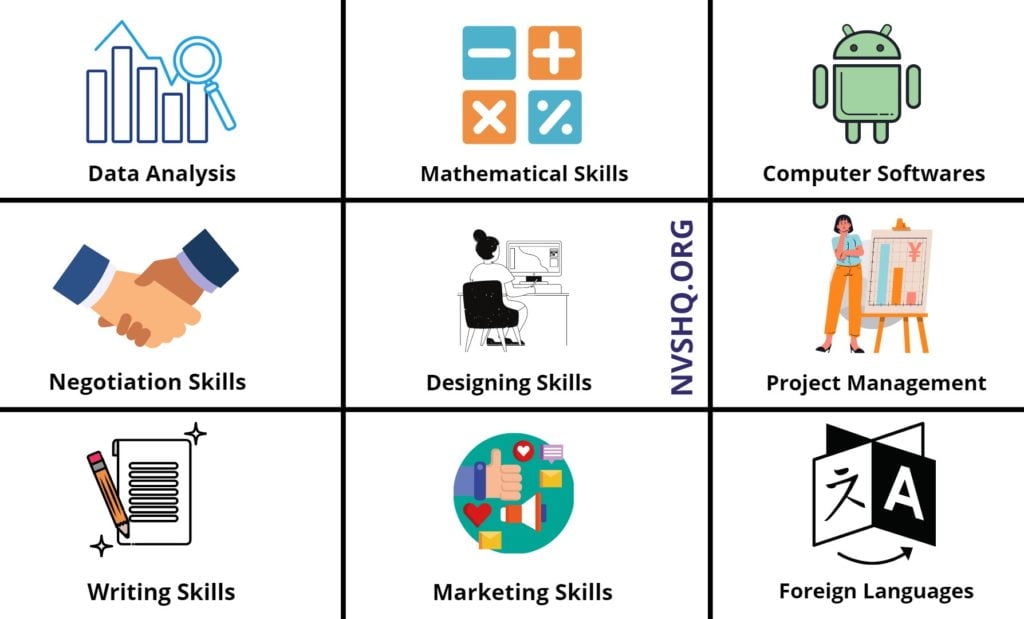
Soft Skills- These are skills that cannot be scaled. It includes all the skills like creative ability, some interpersonal skills, the ability to work under pressure, Communication, writing skills, problem-solving, time management, and the ability to work independently.
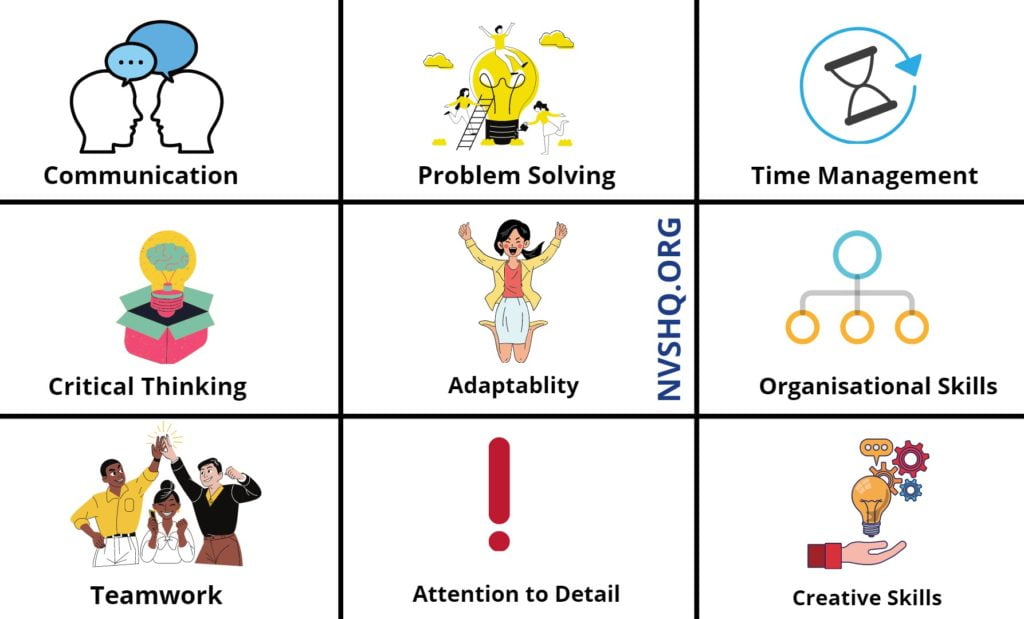
You can use all of these skills depicted below while building your resume. Organize these skills according to the job profile you are applying for. If you don’t possess the experience, search for the skills which will be required by the job profile you want to apply for.
Extra Section (use if required)
An extra section is required to give a final polish to your resume. This section will include all the things that come as an addition to your personality. It may include sections like:
- Hobbies– to demonstrate you are a good fit and stand apart
- Languages known– it is a highly desirable trait if an individual speaks multiple languages.
- Volunteering experience- good to show you’re social and involved in community activities.
Reference Section
In addition to this, you can also put down another section of References which you can use to list down all the references if you have any. Keep the title of the page as ‘ References’. Use a separate page for the same. Make sure to list down at least two to three references on that page.
List the Full Names, their profile titles, and contact information. Some of the best people to include in your reference sections are profiled such as a Manager, Supervisor, Current Co-workers, and Advisors.
Sample Resume/ Example
We have listed here some of the common sections to include in your next resume. You can copy paste this and use it in making your resume.
Title of Resume
FULL NAME
Email: xyz@gmail.com | Phone: 7777777787 | Address: ABC street, city name, country | Pin code: 888785 | LinkedIn Profile: likedin.com/in/your profile (if available)
Objective/ Introduction
Skilled professional with —- years of experience. Willing to enhance my expertise in skills —–in this field, to required for the position of —–. A dedicated and qualified employee, aiming to help achieve a company’s goals.
Work Experience
Recent Job Title
Name of the Employer/ Location/ Start date- End date
- List down all your achievements ( add numbers)
Past Job Title (if any)
Name of the Employer/ Location/ Start date- End date
- List down the achievements
Education
Most Recent Degree Title/ Major Subject
Name of the University/ Start date – End date
Skills and Certifications
- List down all the skills and certification achieved
- Make sure to be specific yet display all the skills relevant to the job you’re applying for.
Additional Section
- List down any type of volunteering experience, any publications, languages known, etc.
Resume Templates
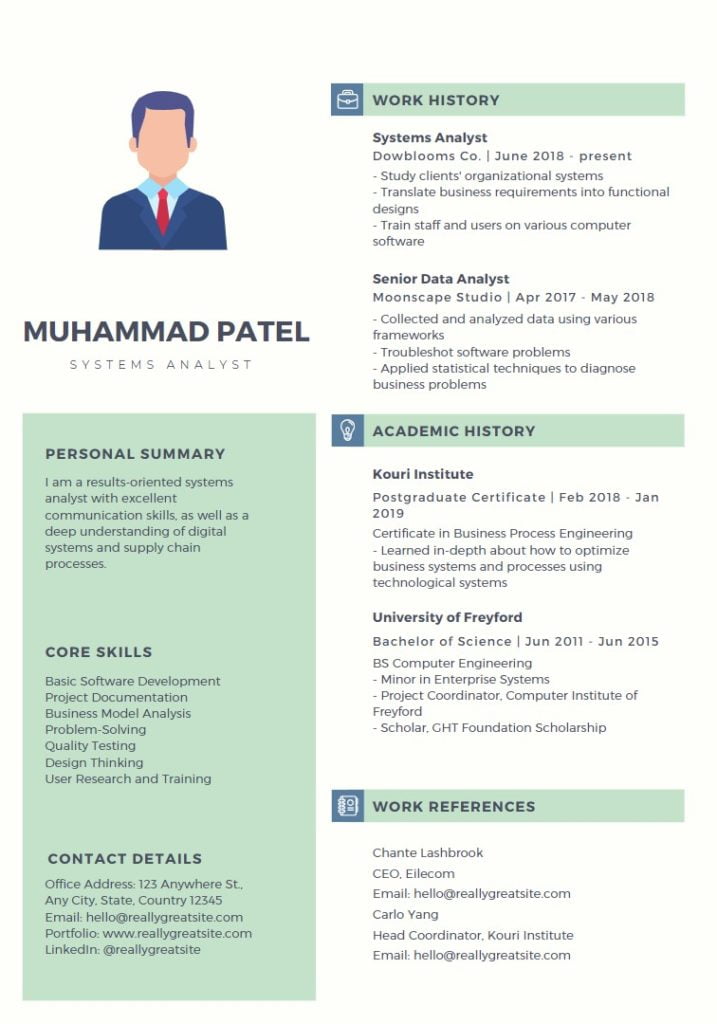
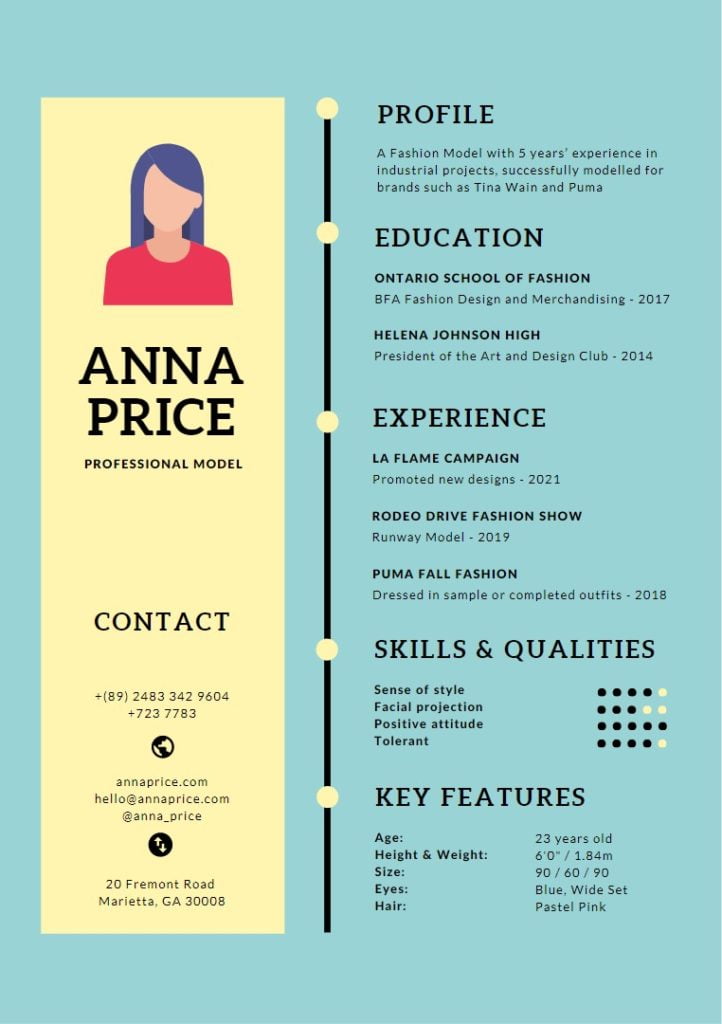
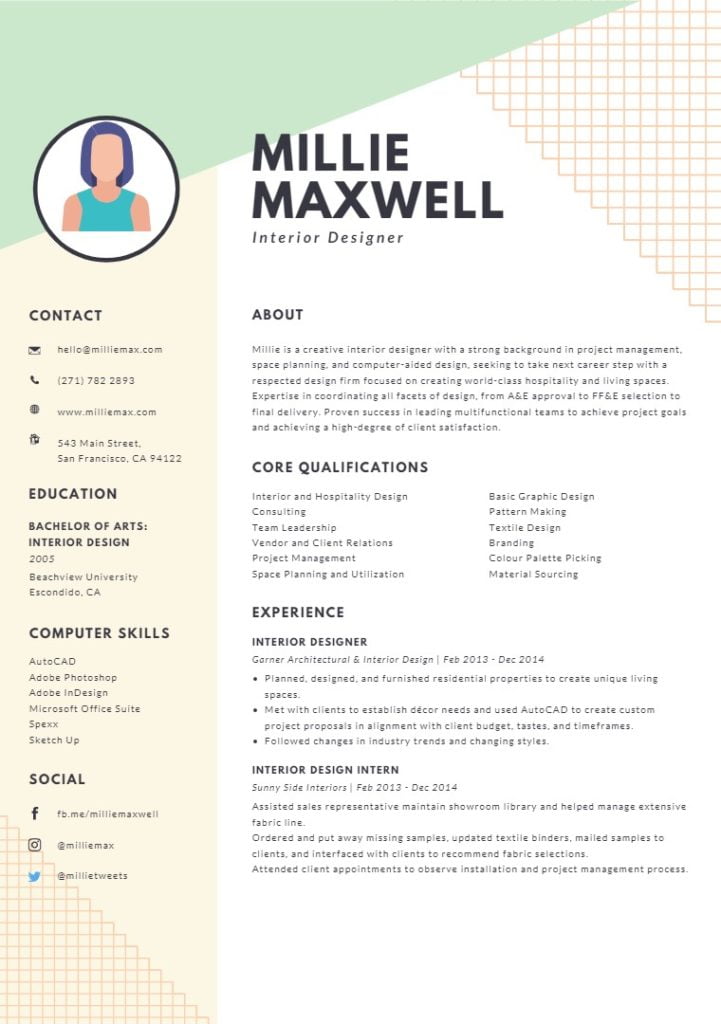

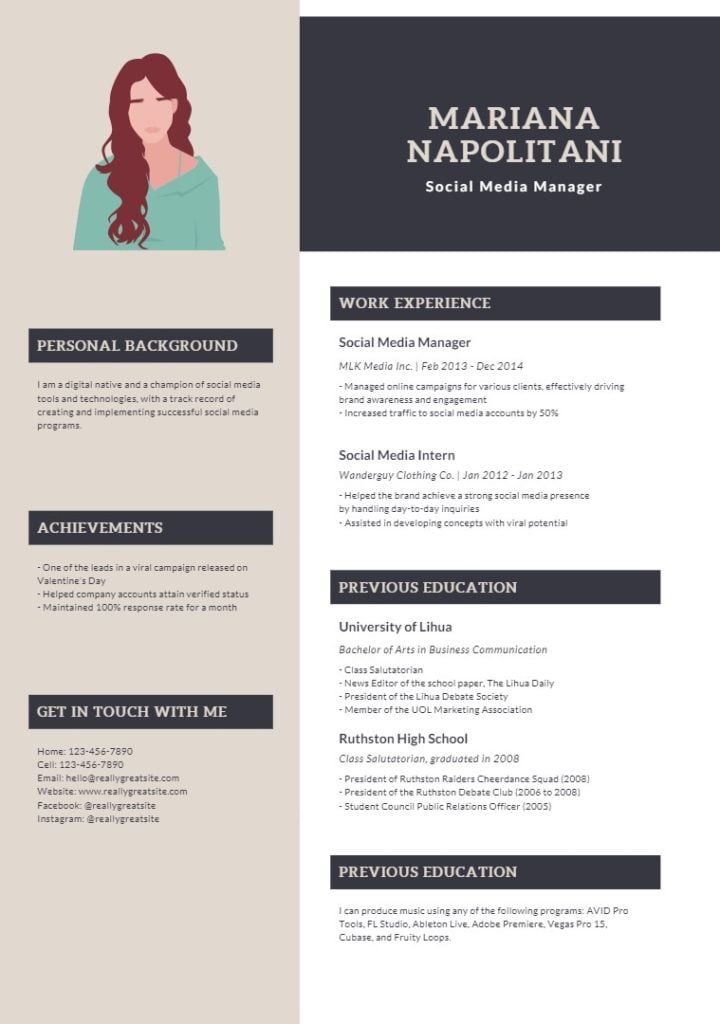

Some Exclusive Tips to write a Perfect Resume
- Try listing your achievements by expressing it with a number, i.e. quantify your achievements.
- If you’re someone who possesses the relevant experience do not stretch your education details. Keep it limited to the title of degree, year and GPA/ SGPA (if higher).
- If you have Graduated/ Post-Graduated. Your Education section should be quite intensified. So, try to include all your academic achievements and extra-curricular.
- The best way to find out what skills you need to put in your resume is by researching the needs of the employer. Be what an employer needs.
- Do not go advertising all the skills, choose only the ones that describe you the best and what you actually possess.
- If you are applying for a profile which is not similar to your past experiences, avoid including those experiences in your resume. For past job titles, use past tense in sentences.
- Do not use more than two fonts on your resume. Maintain the font size of headings on 18 and font size of body on 12.
- Do not bold anything except the headers.
CV vs Resume, Are resume and CV the same thing?
The basic difference between a CV and a Resume is that the CV is also known as the ‘Curriculum Vitae’ is the detailed description of your work or education. What all pieces of training you did undergo and publications if any. It includes almost everything. It is a two or more long-page document. It is an overview of the life’s work of an individual.
CV is most used by fresher’s with rich research experience. Most people are confused about the CV and a Resume. They both are similar in most of the ways yet different. Both of them are used for hiring purposes yet they are different.
| – | CV | Resume |
| About | It is a detailed description of academic and research | Short summary |
| Length | more than 2 page | 1-2 page long |
| Used by | people with a research background | different industries |
In addition to this, a CV may include teaching experience if available, awards, fellowships, and grants achieved. You need to list them down all in specific categories. The format of a CV is depicted below:

Resume Cover Letter
A cover letter is a document attached to a resume. it majorly focuses on your experience side more. It particularly explains your passion for the job you want. Although every job doesn’t require a cover letter. But some job applications are considered incomplete without a cover letter. Therefore, if it is required and mentioned, do not skip this part.
Resume cover letters are best made if you have some experience. You may include all your work timelines in the letter. But if you are someone with no experience, do not worry. You can include all the education details and your future perspective here. We have depicted below two types of a cover letters, for freshers and experienced.
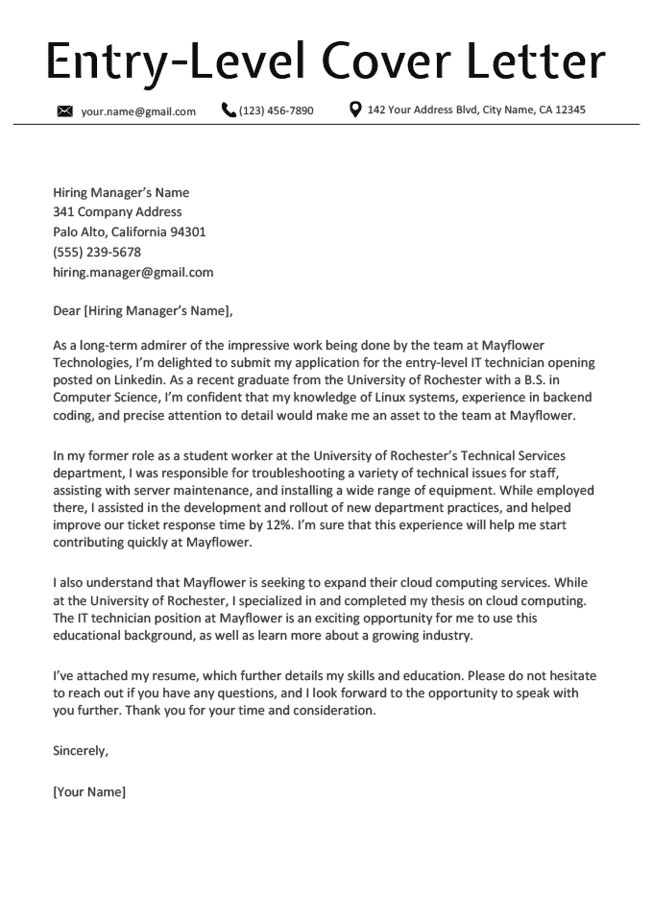
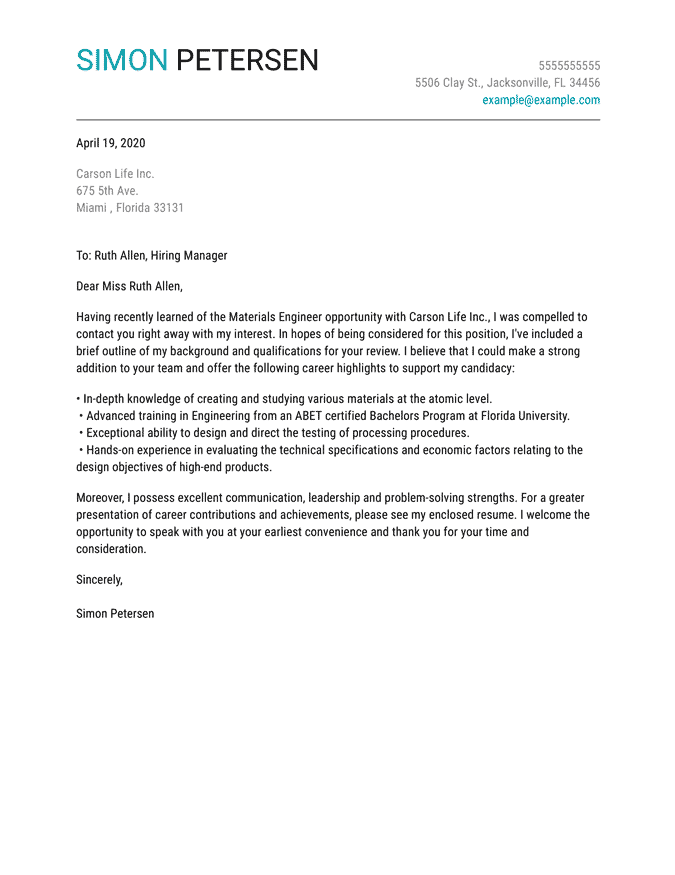
Resume Format for Freshers and Experienced
As discussed above, you may have understood the basic things to include in a resume. There is not much difference in the format for a fresher’s resume except for the fact that the work experience is not included at the top of the resume of a fresher.
Fresher’s want to write a resume should include Educational details first in place of their work experience. Whereas the Experienced, can include their work experience first other than the educational details.
FAQs
Some of the essential things to include in a resume are:
Objective
Contact Information
Work Experience
Educational Qualifications
Skills
Additional Details
While making a resume with zero experience, try to input more of your educational experience, academic background, and skills relevant to the job.
For the experienced candidates, it is advised to include more details of the work experience. Less focus on educational qualifications.
Actions verbs are the verbs that are powerful and exhibit all your skills in a powerful yet readable way. These are used in place of the usually used words. The use of action verbs makes the document readable. Some of these action verbs are: Accelerated, Counselled, Pioneered, Generated, Negotiated, Spearheaded, Engineered, Transformed, etc.
A summary is similar to the introduction. It is located in the same place where an introduction is usually placed. A good summary should include all your skills and experience in a few words. It should showcase all that you have to offer the company. It provides a little idea about your expertise.
Any resume is majorly focused on giving relevant information in a concise format. Therefore, a resume should not be more than two pages long at the maximum. Do not stretch it more than two pages. Most preferred will be a 1-2 page resume.
To list down references in your resume, it is recommended to use another page for your listings. Make sure to include two three references. List their NAme, profile, company, and contact information.
A resume starts with deciding what kind of resume one wants. List down all your details and organize them accordingly. Make different sections, including steps like;
Creating a header
Summary/ Introduction/ Objective
Work Experiences/ Educational Details
Skills
Additional details
It is a letter attached with your resume describing in detail your experiences (if available), otherwise your passion for a certain job. A cover letter includes a description of the qualifications and goals of an individual.
There is no such preference regarding the type of font you use, to make your resume stand out. Although, some of the commonly used fonts are: Calibri, Garamond, Georgia, Cambria, Times New Roman, Arial, Platino, etc.
The skills you want to put in a resume should include all your soft and hard skills. Make sure to list down only the relevant skills. Example of some common soft skills is- Time management, adaptability, communication, teamwork, etc.
For writing the objective of a resume, one can shift the aim according to the needs of the employer. Search what an employer requires and work accordingly. include skills and goals aligning with the need of the employer.
No, A resume is used for job search, a CV—for academic purposes.
You can comment on all your queries regarding the Resume writing below. We shall be glad to help you with the same!

